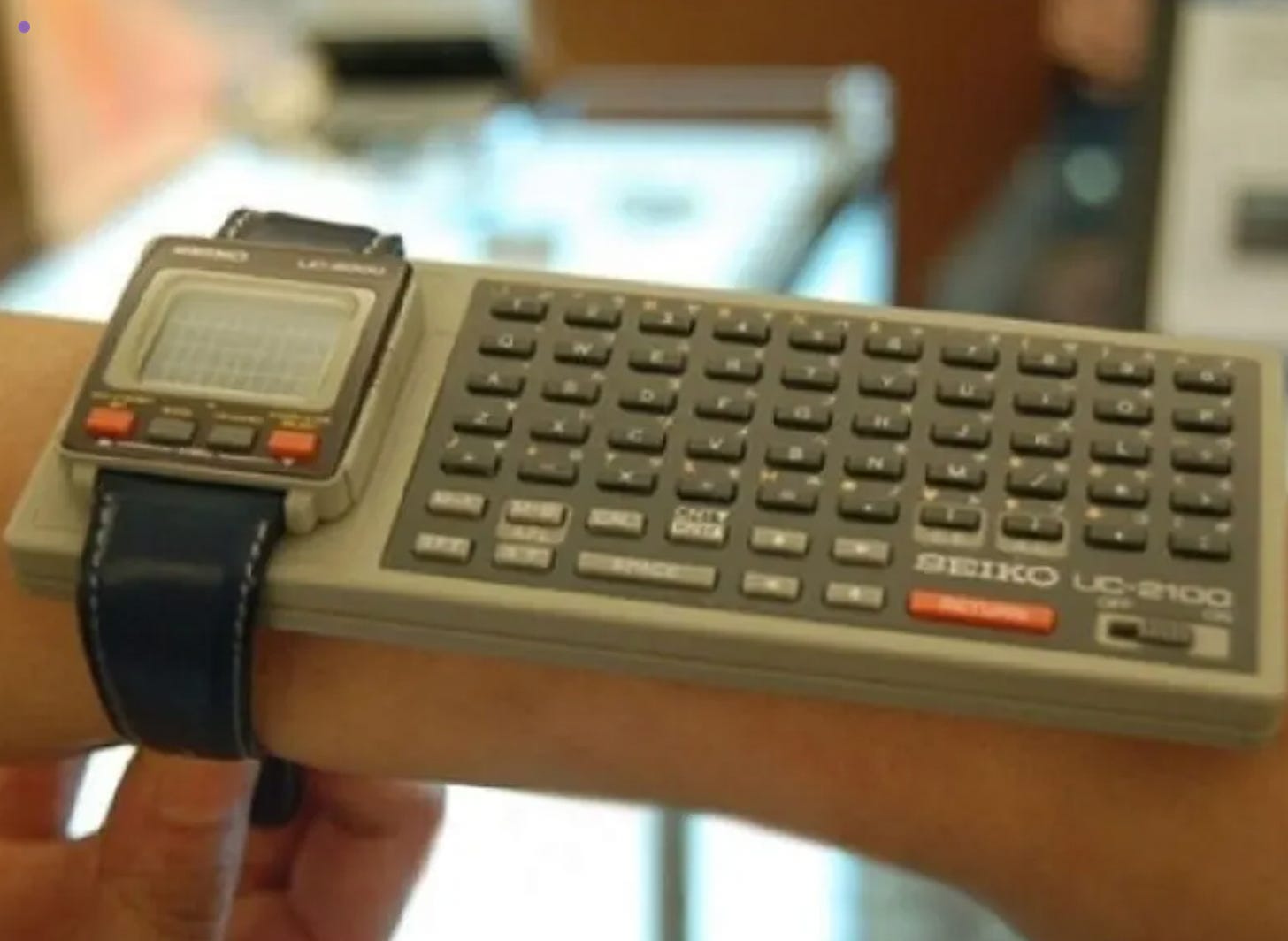The Future of the Future
A Seiko smart watch from 1984
“As a father, I feel a responsibility to prepare my kids for a future in which AI will be doing most of the work,” a friend I admire remarked the other day. “A world in which humanoids will be smarter than humans.”
His comment, with its implicit assumption about the nature of AI’s inevitable impact on the future of work, got me thinking about The Office. Not the TV show, but a 1994 exhibit at the Cooper Hewitt Museum in New York City that explored the design and evolution of the workplace throughout the 20th century, and its impact on human experience and productivity.
The exhibit has remained vividly with me because it demonstrated how even the most informed expert predictions about the impact of changing technologies on work lives can entirely miss the mark.
Exhibit One has to be the numerous and often panicky projections about how digital technologies would transform employment which reached a crescendo during the 1960s. Experts ranging from economists to psychologists sought to anticipate what they confidently heralded as the coming of a “leisure society,” in which computers, then exclusively mainframes, would make much work obsolete.
The Cooper-Hewitt show documented just how widespread– and widely accepted– this assumption was.
For example, at a US Senate hearing in 1967, a panel of experts testified that the average American would be working no more than 22 hours by 1985, and retire at the age of 38. Academics and think-tank consultants agonized about how people would fill all those empty hours, with one commission suggesting that the White House establish a Cabinet-level Office on Hobbies.
Of course, events conspired to undermine this pleasing scenario. First, US productivity began to fall in the early 1970s, as overconfident American companies began to lose their manufacturing edge, even as they spent huge and highly leveraged sums on mergers and acquisitions as opposed to process improvements.
By the 1980s, these miscalculations, combined with the imperative to compete in an increasingly tough global market, led to the start of widespread downsizing, which continued without regard to business cycles. Organizations began routinely distributing a more work among fewer people, who, unlike those imaginary 38 year-old retirees, still needed to earn a living.
People whose jobs were cut began starting small businesses, often selling their services back to their employers. This had the ironic effect of actually incresing work hours, since the self-employed, lacking the robust support (accounting, marketing, admin etc) that larger companies offer, tend to work particularly long hours.
By 1993, things had turned completely upside down regarding workplace predictions, and economist Juliet Schor’s breakthrough book, The Overworked American: The Unexpected Decline of Leisure, began climbing the best-seller charts everywhere.
This progression of confounding circumstances show how even the most informed speculations can quickly produce unforeseen results. This is especially true when, as I wrote last week, technology is viewed as the chief, or even only, driver of major change.
For example, in anticipating the coming of a leisure society , experts miscalculated how companies would adjust workforce size to reflect increased efficiencies that computing power made possible. Rather than having a similar number of employees performing relatively less work, companies spread the work among ever-fewer people.
At the same time, the then-unanticipated development of personal or desktop computers, and their increasing affordability, made working independently, as a consultant, subcontractor, or freelancer, more feasible than at any time since the start of the Industrial Revolution. The result was the opposite of what had been predicted: people began working longer hours under greater pressure, and often retired later than they had anticipated.
As Harvard Business professor Rosabeth Moss Kanter famously observed in the early 90s, “Enough is no longer defined by some preexisting standard like an accepted length of workday, but rather by the limits of human endurance.”
My experience at the Cooper Hewitt continues to shape my response to comfortable assertions about how technology will reshape work. This is especially true of the present flood of assertions. Demographic and environmental changes, along with chaotic and unforeseen political reactions, will intersect with technology in ways we cannot, and never have been able to predict. Ways that may confound our most confident assumptions.
My friend seeking to prepare his young children for the future may want to take heed.
Like what you’re reading? Click here to order my most recent book Rising Together, or How Women Rise, both are available from Amazon or from your favorite bookseller.





